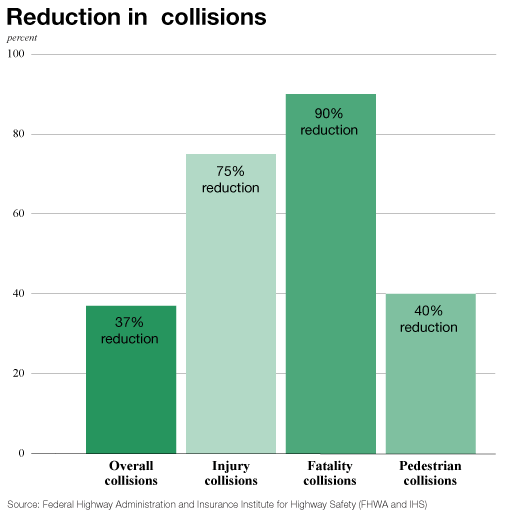versione italiana QUI
Unfolding the difference between a traditional and a collaborative enterprise is a hard job. The risk is to become trivial and abuse once again of terms (communication, sharing, openness…) representing only the surface of the deep effect that the transformation towards collaborative work has on the company.
A simple metaphor can be useful to clarify how and why the collaborative management of projects and processes is not only a tool for greater efficiency, but also reduces the risks associated with the operations.
Traffic lights are the quintessential regulatory superstructure and embody the spirit of the operations of a traditional company. The flow of processes and the progress of projects are strictly governed and managed through the imposition of MTM by external structures or previous constraints. The interchange of the flows (or traffic) prevents players’ meeting and mediating. Of course, if the rules of traffic lights are literally followed by all elements involved (traffic metaphors aside, in an enterprise we focus on people, technology, infrastructure), the risk of collision is extremely remote, but notoriously rules often end up to be broken, and light bulbs can always burn out. The risk to be managed, then, is the seriousness of violent events that tend, in strictly regulated circumstances, to be very destructive on the road as in the company; it is statistically proven that the number of fatal accidents at an intersection with traffic lights is 90% higher than those in a roundabout.
Similarly, in a company where relationships, information streams and decision-making processes are trapped in hierarchical structures and rigidly preordained organization, the risk of potentially disastrous events becomes very high: a hitch in infrastructure or technology, just like a broken traffic light, can trigger an interruption in the value chain, and any little fault against the rules risks triggering devastating chain reactions. People, blinded by faith in the rules and in the direction of traffic, automatically tend to lose control of their actions, which become mechanical and unintelligent. The presence of traffic lights, a parody of an all-seeing Big Brother that controls everything, gives the illusion that avoid thinking is allowed and that checking on the left and on the right for events which could produce a tragic collision -such as an inattentive driver, a drunk or pirate, a burnt out bulb, a broken down car- is not mandatory anymore.
In a roundabout, traffic flow follows a set of rules that allow a tremendously more flexible flow of vehicles, facilitated by collective intelligence of drivers. Drivers are more aware and concentrated thanks to the perception that one’s own behaviour on the road, not the behaviour of a predetermined external instrument, will ensure traffic flowing smoothly and will grant everybody’s safety. Collective dynamics understanding, especially supported by a more immediate and open communication -like using turn signals-, allows to effectively address unexpected critical situations that could arise without excessively slowing down the flow.
The scarcity of accidents in roundabouts, and in particular of fatal accidents, is often explained by the habit of driving at a lower speed, but it is seldom if ever emphasized that lower speed is caused by the feeling that it is essential to perform a personal assessment, as a thinking individual and an active part of a complex process, of attitudes, needs and behaviours of individuals belonging to the same process, and is not caused by the radius of curvature. In brief, the driver entering the roundabout slows down, collects information on the behaviour of all other drivers, decides his strategy and the most appropriate way and eventually goes ahead. Moreover, everything happens without stopping: several studies (eg. A study of the Kansas State University http://www.ksu.edu/roundabouts/) show that the installation of a roundabout decreases delays by at least 20%.
Likewise, in a collaborative business flow of information and relationships will follow more flexible pathways: every individual, with a few basic background rules, will be educated and encouraged to think, evaluate and decide his strategy based on the information he has and the understanding he gained about the strategy of the whole system. Greater attention paid to activities and broader understanding of the external environment -necessary to provide against the absence of laws- can help avoiding traffic jams and bottlenecks in information and process streams, thus drastically reducing the risk of a fracture in the value chain.
The roundabout must be obviously properly designed and sized in order to be effective in terms of traffic flow and risk reduction, and drivers need to be properly trained on its operating principles and basic rules.
In the same way, to obtain a well-working collaborative enterprise resulting in risk mitigation and operational efficiency, the tools used must be planned, well structured and managed, and the operating rules and behaviours must be clearly stated.


j6aag8
c97cbj
angn3l